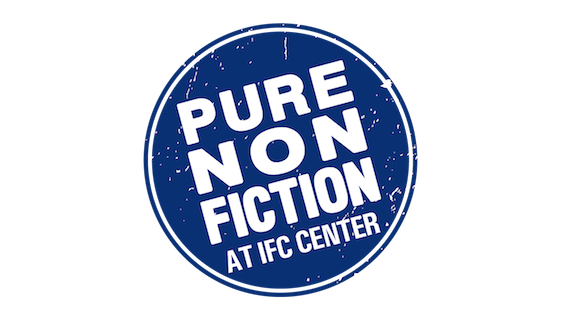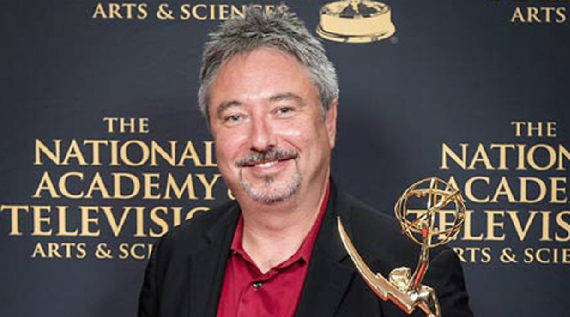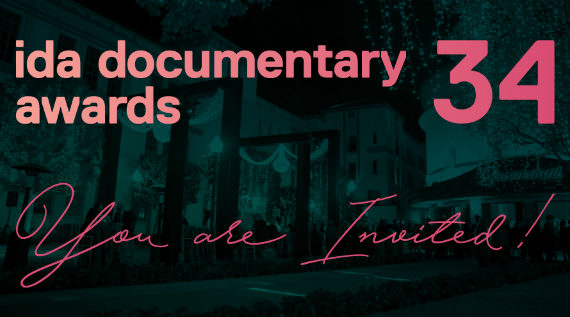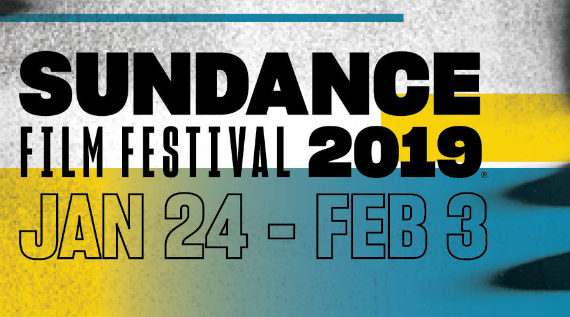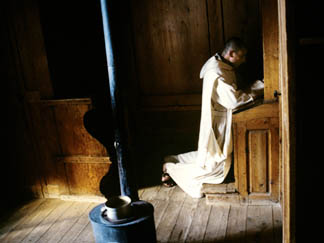 Each summer as I review submissions for the Toronto International Film Festival, I look forward to receiving a big package of screeners from Sandra Buchta, who leads documentary promotion for German Films. Last year, she turned me on to HEART OF JENIN, a co-production of Germany and Israel. In addition, I receive German titles from other sources, such as UPSTREAM BATTLE that came straight from the director. It’s a healthy sign for a country’s output when the official organization can’t keep track of everything. Given so much production happening in Germany, Sandra does a fine job with staying on top of the national scene. Here’s how she responded to my three questions…
Each summer as I review submissions for the Toronto International Film Festival, I look forward to receiving a big package of screeners from Sandra Buchta, who leads documentary promotion for German Films. Last year, she turned me on to HEART OF JENIN, a co-production of Germany and Israel. In addition, I receive German titles from other sources, such as UPSTREAM BATTLE that came straight from the director. It’s a healthy sign for a country’s output when the official organization can’t keep track of everything. Given so much production happening in Germany, Sandra does a fine job with staying on top of the national scene. Here’s how she responded to my three questions…
DESCRIBE THE TRADITION OF GERMAN DOCUMENTARY MAKING.
Sandra Buchta: In Germany there are two traditions of modern documentary filmmaking: one evolved in Eastern Germany, the other one in Western Germany. In the former GDR most documentary films were produced by the state-owned DEFA studio. Among the notable directors who created a distinct style are such names as Volker Koepp, Jürgen Böttcher and Thomas Heise. In Western Germany the documentary production was closely linked to the public broadcasters. The 60s and 70s were particularly fruitful and produced the rise of filmmakers such as Werner Herzog, Alexander Kluge or Hartmut Bitomsky, to mention a few. After 1989 these two traditions of documentary filmmaking crossed – and a new generation of filmmakers has been emerging since then.
Three German documentary filmmakers who have had an impact on the documentary world: Werner Herzog – no comment necessary or if so, watch his latest film ENCOUNTERS AT THE END THE WORLD (by the way, not a German production). Volker Koepp – from his Wittstock-series in the 70s up to his last two films SONS and ELDER BLOSSOM in 2007, he has been exploring unknown Eastern territories and has introduced us to unforgettable protagonists such as Mr. Zwilling and Mrs. Zuckermann in a very unique and human approach. Philip Gröning – for creating a 3-hour-documentary about Carthusian monks which turned out to become not only an international festival-hit, but one of the most successful German documentaries in cinemas at home and abroad (INTO GREAT SILENCE, pictured).
HOW ARE GERMAN DOCS REACHING AUDIENCES?
Buchta: Although slots have diminished, documentaries still have their place in the programmes of the public broadcasters ARD (where each regional station has their own documentary commissioning editors), 3sat, ARTE/Germany and ZDF. Documentaries are also regularly released in cinemas, but distributors still fight to find audiences. In the last 10 years there have been some breakthroughs which have changed the public image of documentaries – from a mere TV-programme into a theatrical event. The documentary RHYTHM IS IT (2004) by Thomas Grube and Enrique Sanchez Lansch about a social youth project by the Berlin Philharmonic Orchestra hit the nerve of more than 600,000 viewers. Part of the success was due to specific target group-marketing and distribution – the rest was magnificent word of mouth. After monks and music, other successful theatrical ingredients have been polar bears (EARTH, the British-German co-production reached over 3,500,000 viewers) and, of course, soccer: the documentary, DEUTSCHLAND – EIN SOMMERMÄRCHEN, about the German team at the soccer World Cup 2006 leads the list of successful docs with almost 4,000,000 viewers.
WHERE ARE GERMAN DOCS HEADED?
Buchta: Germany’s new Federal Film Fund (DFFF), which was installed in 2007 to support the production of feature films for cinema, also funds creative documentaries (and co-productions). In general, due to the film funding facilities on a federal and regional level, there are many independent documentary filmmakers in Germany. Around 700 of them are members of the Association of Documentary Filmmakers (AG DOK). There are different initiatives in Germany for online-distribution of documentaries as well.
Due to excellent training at the major film schools in Germany (many with specific documentary departments) young filmmakers are now producing creative documentaries demonstrating individual signatures and high quality. Among the many talents, watch out for these three: Bettina Timm’s 30-minute documentary COSMIC STATION takes us to the top of an Armenian mountain, where a couple of scientists still dedicate themselves to a prestige project of the Soviet Union – the discovery of unknown galaxies. (Festivals: Visions du Réel/Nyon, Karlovy Vary). Maximilian Plettau’s COMEBACK follows the German boxer and ex-champion Jürgen Hartenstein from his provincial town of birth through shabby training halls to an all-decisive boxing match in Philadelphia. (For this film the director, who is also the DP, won the German Camera Award. Festivals: Visions du Réel/Nyon, Silverdocs). Sebastian Heidinger’s DRIFTER closely and controversially observes young drug addicts in the district around Berlin’s Bahnhof Zoo – a place which gained notoriety in the early 80s after the biography and film CHRISTIANE F. (Festivals: Visions du Réel/Nyon, Cracow).


